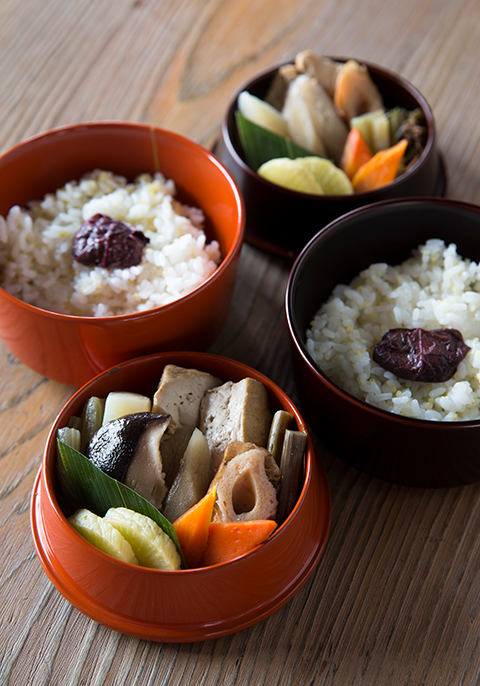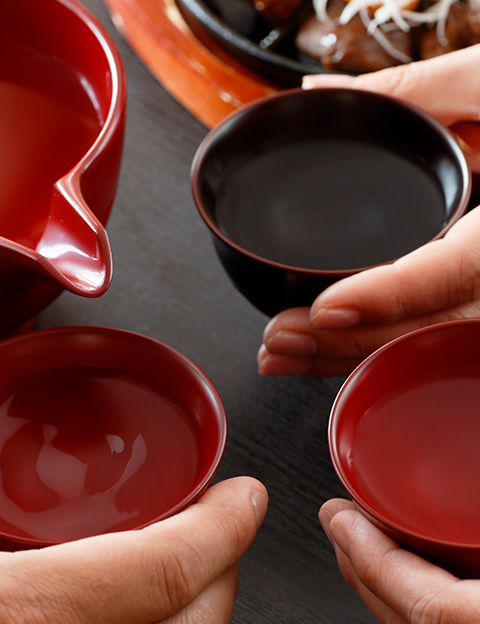Lacquer’s power to make life superfine
Life with lacquerware
Setouchi Jakucho who has a deep connection with Joboji once told these kinds of things at the lecture whose theme was lacquer. “You should eat with fine tableware especially during economic downturns (laugh). Any rice is all right but only tableware should be fine (laugh), and also with fine chopsticks. That is how you can get nutrition.” It is lacquer that is also nutrition for our mind.

Washoku and Lacquerware
“Japanese food: traditional Japanese food culture” was registered in UNESCO intangible cultural heritage. The scene of Japanese food is the home ground of lacquerware. The weak point is knife and fork. Since it is resistant to acid, a vinegar dish is all right. It is perfect for a lunch box due to its antimicrobial action.
The stance of Japanese food to make use of materials are common to lacquerware. Japanese materials are not only foodstuff, but also their living time and season are material itself. Flowers bloom and then fall. Then they bloom again. The Japanese appreciate seasons’ changing from day to day and from time to time as well as meeting again, enjoying themselves; that is condensed Japanese sense of beauty. There os various local lacquerware that has supported each local food culture from the North to South.
The formal style of Japanese food is Kaiseki, and it is broth in a lacquer bowl with piled food that is regarded as the special flowers of Japanese food. Seasonal food materials and flavor of “soup” as one body have been served in lacquerware. The season is lit up on the table, for example, edible wild plants in spring and mushrooms in autumn.
Also, it is the Lacquerware’s turn for special dishes on annual events like New Year’s Day. Lacquerware is always together with Japanese living such as rice cake soup, scattered sushi, Bento for cherry blossom viewing, soybean flour in Equinox, exchange nuptial cups at the wedding, and a small table for ancestors’ spirits in Bon.

Sake and lacquerware
When you drink at home in the evening, lacquerware enables us to have a rather good time. It is needless to say, having a long history, sake and lacquer are well matched. Both a large plump sake cup and a sake cup with fading margin are soft and comfortable when lips touch it. A connoisseur of sake says that sake’s taste is different with vessels. You will find a new excitement if you try various containers.
Lacquerware is often recommended for drinking well-aged sake and junmai sake as a sake drink set, but since it does not convey heat easily, a little bigger one is perfect for drinking chilled daiginjo sake and beer.
Also, another drinking home’s pleasure is that a side dish becomes refined with lacquerware. You can enjoy drinking as if you were in the bar since even cold tofu or cheese alone on lacquerware has a refined elegance.
With lacquer bowls on the table, the grade of the party where your friends get together will be higher. Either refined sake or raw sake is good. Sangria with orange is gorgeous. The size is rather large but it can be also used for serving boiled food instead of sake, and it is useful for staging your home.
